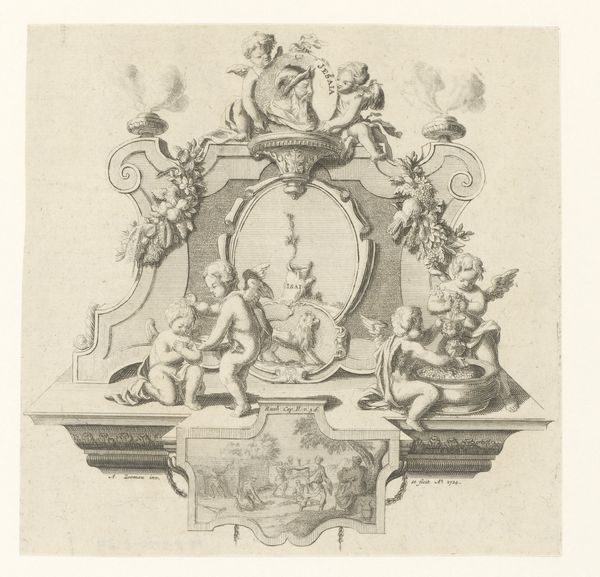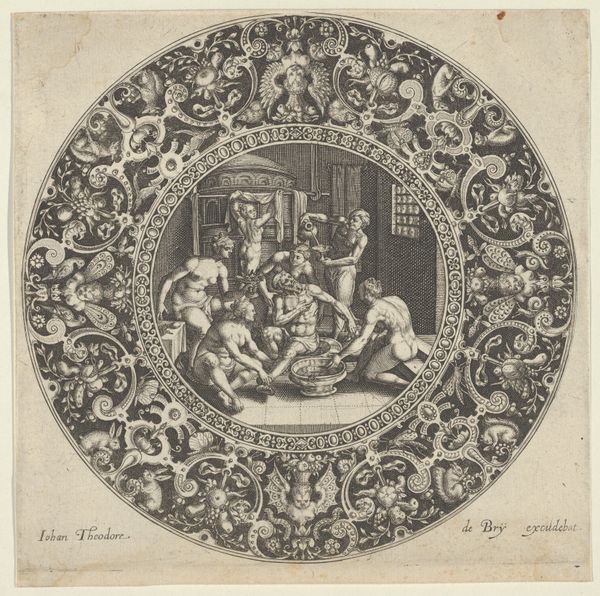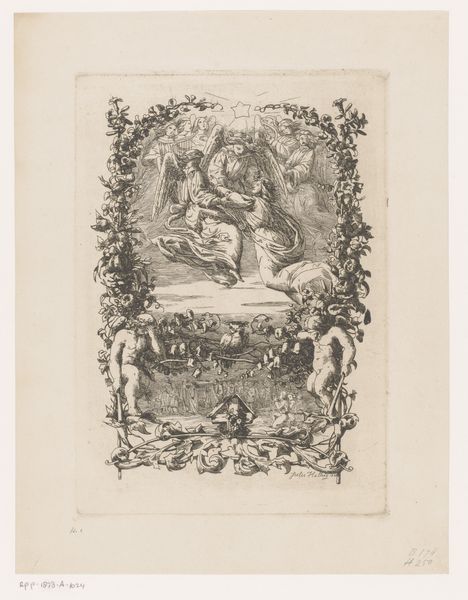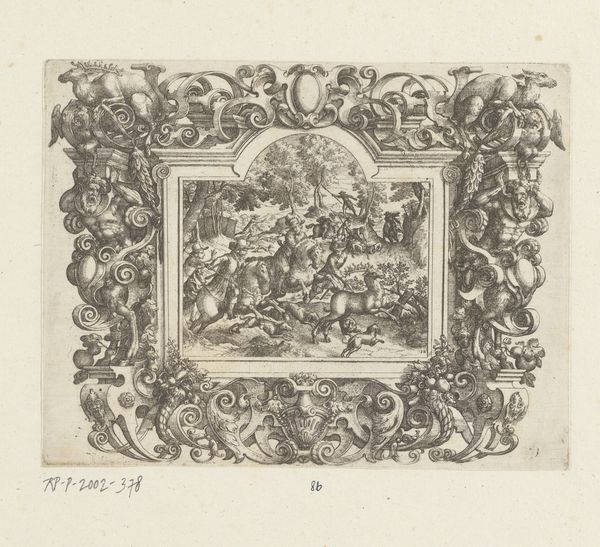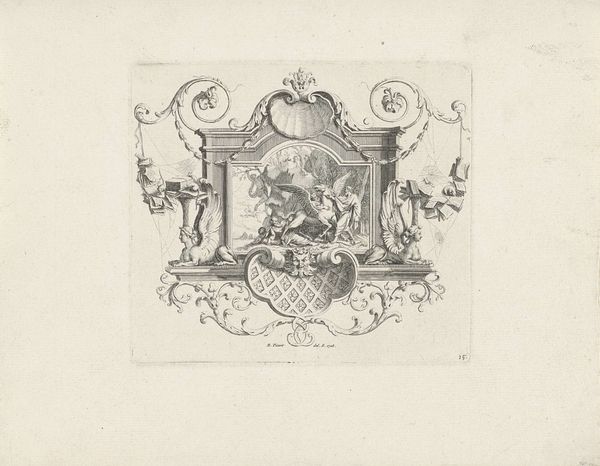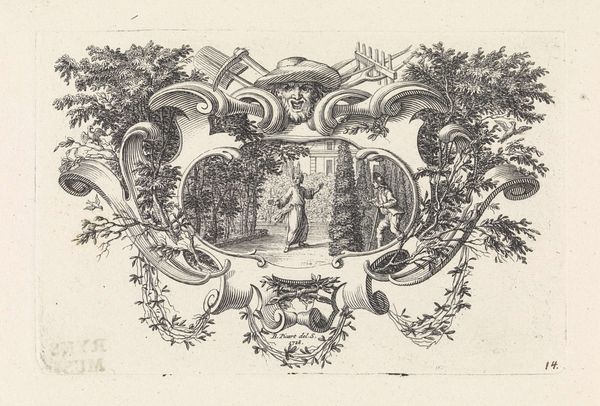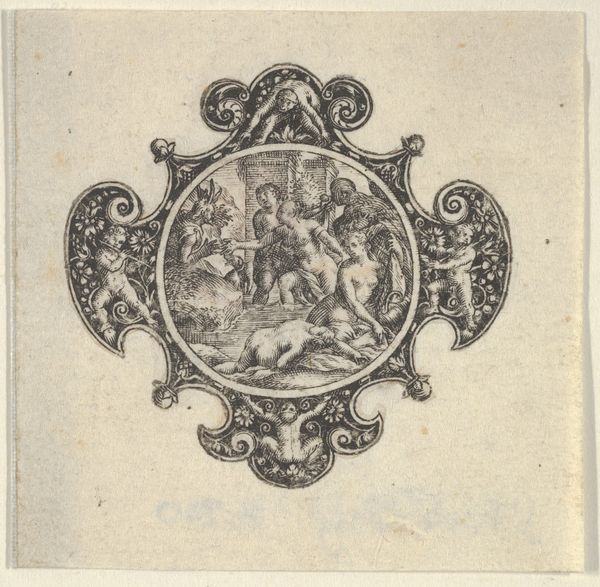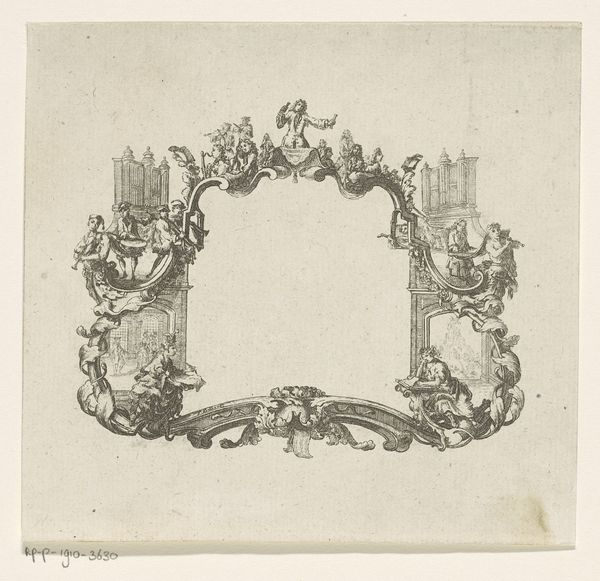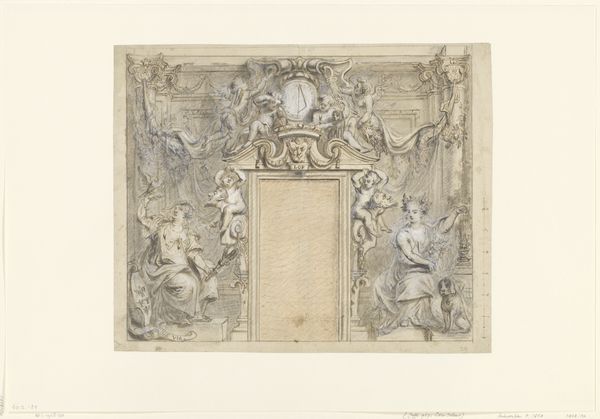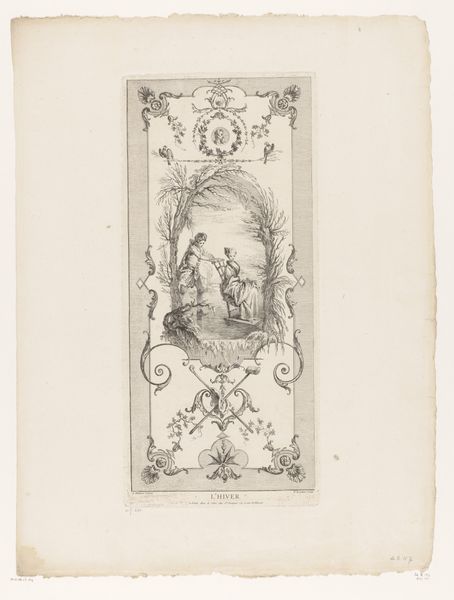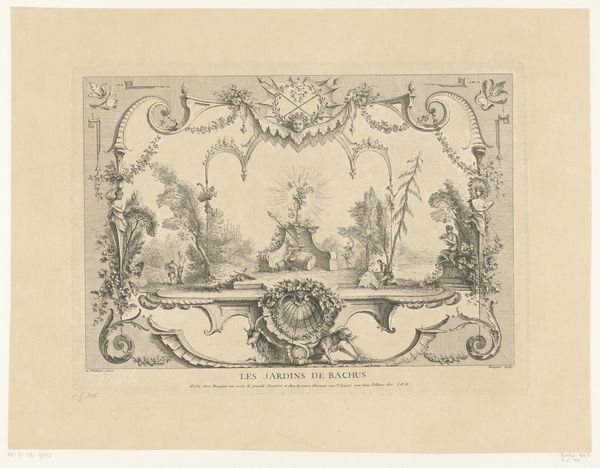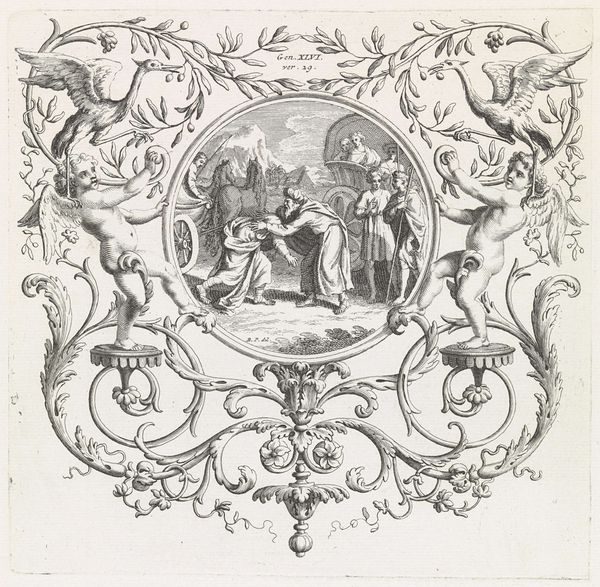
Dimensions: height 563 mm, width 575 mm
Copyright: Rijks Museum: Open Domain
This intricate drawing of an onyx stone, featuring a Roman chariot pulled by centaurs, was created by Simon Fokke in the 18th century. Dominating the scene is a chariot procession, a symbol deeply embedded in the Roman psyche as emblematic of triumph, power, and imperial glory. The centaurs, figures from Greek mythology, pull the chariot, beings that are half-man and half-horse, embody the duality of human nature—reason and instinct. A victorious figure is crowned with a laurel wreath, a motif stretching back to antiquity, signifying honor, victory, and divine blessing. Consider the recurring appearance of the chariot procession throughout history, from ancient Roman triumphal arches to Renaissance tapestries. The enduring appeal of such imagery lies in its capacity to stir the collective memory, engaging viewers on a visceral level with archetypal themes of conquest, triumph, and the cyclical nature of power. The laurel wreath, similarly, has resurfaced time and again, adorning heroes and symbolizing achievement across centuries.
Comments
No comments
Be the first to comment and join the conversation on the ultimate creative platform.
